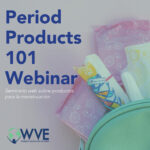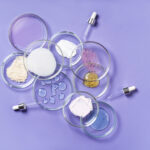Chemicals of Concern Commonly Found in Fragrance Used in Cleaning Products
Allergens: Numerous fragrance ingredients, even those which are natural compounds found in lavender oil and lemon oil, for example, can lead to allergies in sensitive persons. Exposure to allergens in fragrance through inhalation or absorption through the skin can cause skin and eye irritation, as well as more serious impacts such as breathing problems.
Synthetic Musks: Synthetic musks are man-made chemicals produced to replicate musk scents originally obtained from musk deer and musk ox. The most commonly used synthetic musks are the polycyclic musks, galaxolide and tonalide, and two types of nitro musks, musk xylene and musk ketone. Research indicates that synthetic musks don’t break down in the environment, can accumulate in our bodies, are potential hormone disruptors and may break down the body’s defenses against other toxic chemical exposure.
Phthalates: Phthalates are a class of chemicals used in fragrance that do not contribute a scent, like musks or plant essences do, but rather act as solvents and carriers for those chemicals that create the scent in a fragrance. Phthalates have been shown to cause reproductive and developmental harm in laboratory animals, and are linked to similar impacts in humans.
Imagine yourself in a flower garden, a shady pine forest, a lemon grove on a summer day or on a tropical island at sunset. Peaceful, joyous images come to mind for most of us—and this is exactly what the manufacturers of many cleaning products aim to deliver to your very own home! But most of us are unaware that thousands of synthetic chemicals are used to create modern day fragrances for our products. Unfortunately, some common fragrance ingredients used in cleaning products pose potential health hazards.
What is Fragrance?
The term “fragrance” refers to any substance, either natural or man-made, which conveys an odor or scent. Any one fragrance can be made up of potentially hundreds of different ingredients. Typically, fragrances created for cosmetic and cleaning products are dominated by synthetic, as opposed to natural plant-based, ingredients. Estimates indicate 80-90% of the raw materials used in fragrances today are synthetic.
How Are We Exposed to Fragrance?
When we use a fragranced product in our homes, we all inhale or absorb some of those toxic fragrance chemicals into our bodies. Chemicals like synthetic musks and phthalates, for example, have been detected in blood, urine and fat tissue in nearly every human tested. The levels of these chemicals in our bodies appear to be linked to the amounts of fragranced products we use. For example, one study found that greater use of fragranced laundry detergent during pregnancy led to significantly higher levels of synthetic musks in the woman’s breast milk. Women can pass these chemicals on to developing children when they breast feed. Another study found higher levels of musks in the blood of women who regularly used fragranced body lotion, deodorant and perfumes.
Women are More Impacted by Fragranced Cleaning Products than Men
Women are targeted by fragrance marketing, since they tend to make the vast majority of household purchasing decisions, especially for cleaning products. Unfortunately, women are more likely than men to experience adverse health effects from exposure to fragrance. For example, women are more likely to have fragrance allergies than men. In addition, women are more vulnerable to the potential hormone-disrupting effects of fragrance ingredients, which can affect fertility and pregnancy. Exposures to even small levels of toxic fragrance chemicals during pregnancy may pose lifelong health impacts on our children.
How Can We Avoid Harmful Fragrance Chemicals?
By reducing exposure to fragrance chemicals, we can lessen health impacts and lower the levels of these chemicals in our bodies. However, most information about cleaning product ingredients, and fragrance ingredients in particular, is kept secret from consumers, making it difficult to tell which products are better than others. There is currently no legal requirement for cleaning product companies to disclose their ingredients. While
some manufacturers voluntarily disclose some cleaning product ingredients, very few are listing fragrance ingredients. This means that even if ingredients are disclosed for a cleaning product, the word “fragrance” may appear, but the individual chemicals which make up that fragrance will not be listed. Currently, the only practical solution is to reduce or completely avoid fragranced products entirely. This is simply an unfair choice: we must either abstain from the pleasures of fragrance or assume potential health risks.
There is a Better Way!
We should be able to enjoy fragranced products without worrying about impacts to our health. Manufacturers of fragranced cleaning products can and should make this possible for their customers:
- Companies should voluntarily disclose all fragrance ingredients in fragranced products directly on the product label, where it helps you the most.
- Manufacturers should reform their products to eliminate chemicals of concern, such as phthalates and synthetic musks, and replace them with safer alternatives.
What You Can Do
- Reduce or eliminate your use of fragranced cleaning products. Check out WVE’s Alternatives to Fragranced Cleaning Products.
- Read the full report What’s That Smell?
- Take Action — Demand change from government, corporations and decision makers put an end to fragrance secrets!
- Support the work of Women’s Voices for the Earth. Sign up for WVE’s Action Network to learn more about you can support policies that protect us from toxic chemical exposure, and make a donation in support of WVE.
- Check out WVE’s first-ever comic, How Did That Pine Forest Get in My Cleaner?





